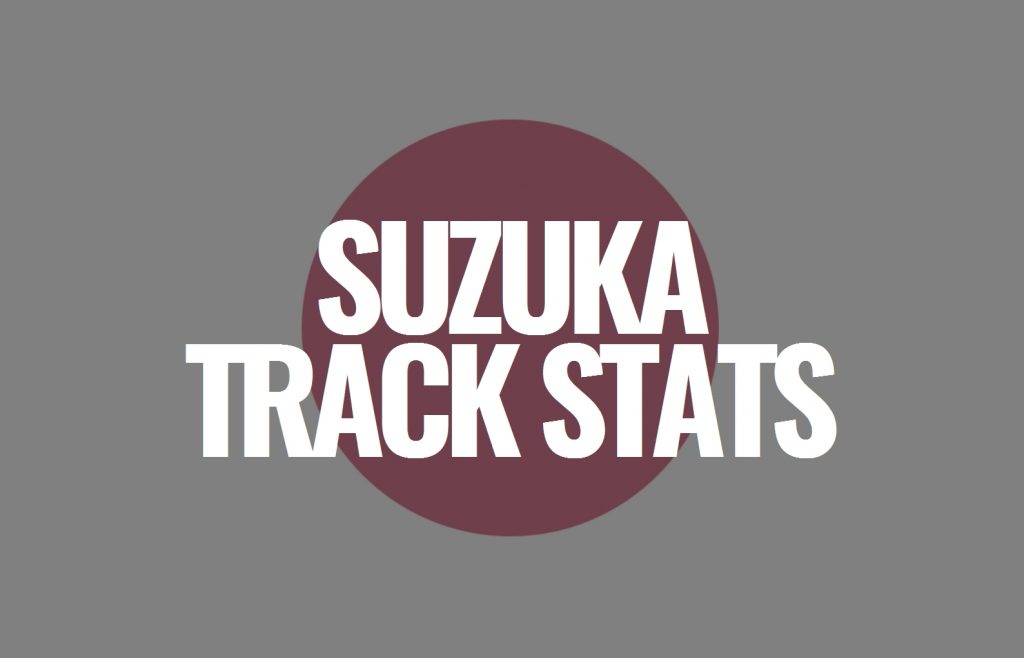For the seventeenth round of the championship, Formula One heads to Japan and one of the drivers’ favourite tracks – Suzuka. Here are all the stats you need ahead of the 2018 Japanese Grand Prix!
?? SUZUKA RACE WINNERS
There have been 29 Formula One races held at the Suzuka circuit. During that time, there have been fifteen different winners of the Japanese Grand Prix at the track.
Michael Schumacher is the driver with the most wins at Suzuka, having taken six Japanese Grand Prix victories. Ferrari and McLaren are tied for the most wins here, each having won seven times.
Four drivers have taken back-to-back wins at the circuit. It’s Michael Schumacher who has taken the most consecutive wins at Suzuka – he won three years in a row between 2000 and 2002.
There are four drivers on the current grid who have previously won at Suzuka. Sebastian Vettel has won here four times, Lewis Hamilton has three victories, and Kimi Raikkonen and Fernando Alonso have one win apiece at the track.
The longest streak of different winners at Suzuka in seven, with there being no repeat winners at the track between 1989 and 1995.
The largest win margin here came in 2012, when Sebastian Vettel won the race by 20.632 seconds. The smallest win margin was in 1991, when Gerhard Berger beat Ayrton Senna to the win by just 0.344 seconds.
From the last ten Grands Prix at Suzuka, the average win margin at the track is 8.519 seconds.
?? ON THE PODIUM AT SUZUKA
35 different drivers have finished on the podium at Suzuka during its 29 race history.
Michael Schumacher has the most podium finishes of any driver here, with nine.
There are seven drivers on the 2018 grid who have previously finished on the podium at the track. Sebastian Vettel has the most of the current crop, having finished in the top three seven times. Lewis Hamilton has five rostrum appearances here, Fernando Alonso has four, Kimi Raikkonen has three, Max Verstappen two, while Daniel Ricciardo and Romain Grosjean have a solitary podium here.
?? SUZUKA POLESITTERS
From the 29 races here, there have been thirteen different polesitters.
Michael Schumacher is the driver with the most poles at Suzuka, having taken pole position here eight times. Ferrari are the team with the most pole, with nine starts from the front of the grid.
Five drivers have taken back-to-back poles at the circuit. Michael Schumacher holds the record for the most consecutive Suzuka poles, setting the fastest Saturday lap five times in a row between 1998 and 2002.
Sebastian Vettel and Lewis Hamilton are the only drivers on the current grid who have taken pole at Suzuka. Vettel has taken pole here four times, while Hamilton took his first pole at the track last season.
The longest streak of different polesitters here is five, which has occurred twice. Between 1990 and 1995 and in the five races here between 2003 and 2009, there were no repeat polesitters.
The smallest pole margin here is 0.009 seconds, which has happened twice – in 2000 and 2011. The largest pole margin at Suzuka is 1.730 seconds, by Ayrton Senna in 1989. That’s the only time pole has been taken by over a second at the track.
Expect a close qualifying session. From the last ten races at the track, the average pole margin is just 0.118 seconds.
?? SATURDAY TO SUNDAY
Fourteen races here have been won from pole, while 25 have been won from the front row of the grid. Since 2009, every Japanese Grand Prix has been won from either first or second on the grid. Only two of the past 25 races here have been won from further back than second.
The furthest back win at Suzuka was in 2005, when Kimi Raikkonen took a remarkable victory from seventeenth on the grid.
?? SUNDAY STATS
Six of the last nine Japanese Grands Prix have seen a Safety Car period. The most number of Safety Car periods in a single race here is three, which happened in 2014 (if you count the Safety Car period which was interrupted by a red flag as two separate periods).
Six races at the track have been affected by rain.
The longest and shortest races here have a time difference of over 32 minutes. The shortest race at the track was the 2006 race, which Kimi Raikkonen won in a time of 1:23:52.413. Meanwhile, the longest race was in 1994. Michael Schumacher won that race in a time of 1:55:53.532.
The most number of cars to finish a race here was in 2011, when 23 drivers reached the end of the race. The highest finish rate, though is 100%, as every driver who started the race made it to the finish line in 2016. The lowest number of cars to make the end of the race at Suzuka is ten, which has happened three times – in 1989, 1990 and 2002.
From the last ten races at Suzuka, an average of eighteen cars have reached the chequered flag.
There have been two red-flagged races at Suzuka – in 1994 and 2014. The latter was red-flagged twice.
?? CHAMPIONSHIP GLORY
A World Champion has been crowned here eleven times in Formula One history, including five times consecutively between 1987 and 1991. The last World Champion to be crowned here was Sebastian Vettel in 2011.
The winner of this race has gone on to win that year’s title on seventeen occasions. The winner of the Japanese Grand Prix has won the title in the same season in every year since 2012.
Since 1998, there have been only three occasions where the leader of the championship after the Japanese Grand Prix has failed to go on to win the title. (Lewis Hamilton in 2007, Mark Webber in 2010 and Fernando Alonso in 2012)

